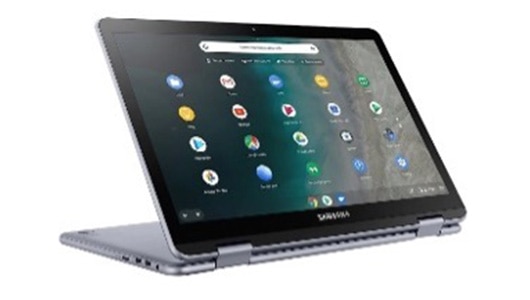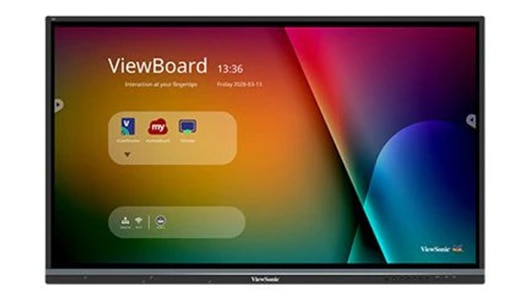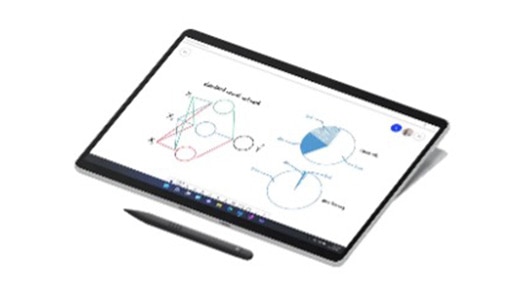This website stores cookies on your computer. These cookies are used to collect information about how you interact with our website and allow us to remember you. We use this information in order to improve and customize your browsing experience and for analytics and metrics about our visitors both on this website and other media. To find out more about the cookies we use,
see our Privacy Policy.
Open House • Learn how you can grow your career with us! • May 15 • 3:00–6:00 p.m. • Merrimack, NH
Classroom Technology
Technology Stimulates Learning in the Classroom
Classroom technology plays a crucial role in helping educators meet today’s educational challenges and helps prepare students for tomorrow. A classroom is no longer a blackboard and a set of fixed desks. Students are empowered with Chromebooks and tablets, interact with gamified learning software, communicate through collaboration platforms, and engage with teacher presentations on interactive whiteboards. Moveable furniture allows classroom design itself to shift to better meet the needs of the day’s lesson plan, while offering students more flexibility and better ergonomics. Whether classes are online or in-person, technology has transformed the way we teach and learn. Students can take a VR tour in a geography class, complete STEM experiments with real-time partners a world apart, or ask questions of a world-class expert during a virtual presentation. Solutions also extend to provide educators with greater professional development opportunities, reduce administrative duties, and streamline routine student scoring so they have more time with students. And for school districts, investments in infrastructure and cybersecurity provide the reliable foundation for the most exciting classroom technology that’s currently available.

Featured Classroom Technology Products
Mfr:
LG Electronics
Bluetooth, LAN, WiFi Networking
$647.95
Mfr:
Lenovo
Affordable Versatile Classroom Laptop
Was
$369.00
Now
$334.33
Mfr:
Smart Technologies
4:3 with 20 Touch Points
$1,259.95
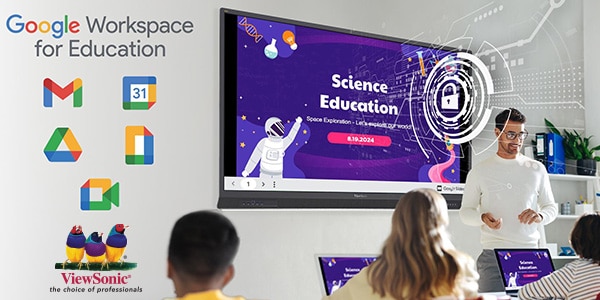
Robust Android™ EDLA-certified Solutions
ViewSonic® ViewBoard® IFP52-2ED Series interactive displays let teachers seamlessly and securely access the Google ecosystem.Top 5 Classroom Tech Trends Transforming Learning in 2025

The adoption of classroom technology has seen a dramatic increase over the past few years. This shift, initially sparked by the necessity of remote learning during the pandemic, has led to an enduring integration of digital tools in education.
As a result, investments in educational technology have surged. The EdTech market size was valued at $254.80 billion USD in 2021, but is now expected to reach $605.40 billion USD by 2027. Meanwhile, 51% of school teachers, principals, and district leaders say they are invigorated by technology.
Picture this: A student in biology slips on a VR headset to explore the circulatory system from the inside out. Across the room, another uses an AI-powered assistant to draft a lab report tailored to their reading level. Meanwhile, the teacher monitors class-wide progress in real time through a cloud-based dashboard that automatically adapts the next lesson. This isn’t science fiction—it’s the classroom of 2025.
The growing interest and investment in technology has paved the way for the deployment of new strategies and innovative ways to employ technology in the classroom. From immersive technologies to intelligent learning systems, this article explores five trends that are transforming how students learn—and how teachers teach.
The impact is measurable. One study found that adaptive learning improved academic performance in 59% of studies, while 36% reported increases in student engagement. These tools also give educators instant visibility into learning gaps, enabling targeted support where it's needed most.
Studies show that gamified feedback can improve academic performance by 40% and engagement by 48%, while real-time feedback can enhance retention by up to 36% and reduce student errors by 30%. In one multi-month classroom study, students’ quiz scores increased by an average of 0.63 points from the first to the second month after gamification elements were introduced. Beyond academic gains, user activity rates climbed steadily, indicating stronger student motivation and more frequent interaction with the learning platform.
As a result, investments in educational technology have surged. The EdTech market size was valued at $254.80 billion USD in 2021, but is now expected to reach $605.40 billion USD by 2027. Meanwhile, 51% of school teachers, principals, and district leaders say they are invigorated by technology.
Picture this: A student in biology slips on a VR headset to explore the circulatory system from the inside out. Across the room, another uses an AI-powered assistant to draft a lab report tailored to their reading level. Meanwhile, the teacher monitors class-wide progress in real time through a cloud-based dashboard that automatically adapts the next lesson. This isn’t science fiction—it’s the classroom of 2025.
The growing interest and investment in technology has paved the way for the deployment of new strategies and innovative ways to employ technology in the classroom. From immersive technologies to intelligent learning systems, this article explores five trends that are transforming how students learn—and how teachers teach.
Trend 1: Adaptive Learning Software
In 2025, adaptive learning platforms are no longer optional—they’re foundational. These AI-driven systems analyze student responses in real time, dynamically adjusting lesson difficulty, pacing, and content based on individual performance. This personalized approach ensures students stay challenged without feeling overwhelmed, and it offers timely interventions when learners start to slip behind.The impact is measurable. One study found that adaptive learning improved academic performance in 59% of studies, while 36% reported increases in student engagement. These tools also give educators instant visibility into learning gaps, enabling targeted support where it's needed most.
Trend 2: Gamified Learning Reimagined with Real-time Feedback
Gamification is becoming a proven method for boosting academic performance and student engagement. Educational platforms are now incorporating game-based elements like point systems, progress tracking, and achievement badges alongside real-time feedback to drive continuous improvement. This combination doesn’t just make learning more enjoyable—it makes it more effective.Studies show that gamified feedback can improve academic performance by 40% and engagement by 48%, while real-time feedback can enhance retention by up to 36% and reduce student errors by 30%. In one multi-month classroom study, students’ quiz scores increased by an average of 0.63 points from the first to the second month after gamification elements were introduced. Beyond academic gains, user activity rates climbed steadily, indicating stronger student motivation and more frequent interaction with the learning platform.
Trend 3: Augmented and Virtual Reality
Augmented and virtual reality (VR) technologies are now finding real traction in classrooms. More schools are integrating VR into science labs, history lessons, and even career and technical education, creating immersive, hands-on experiences that bring abstract concepts to life. From dissecting virtual frogs to exploring ancient ruins in 3D, VR allows students to learn by doing, not just by watching or reading. This approach has measurable benefits: a 2023 study found that VR-trained learners were 275% more confident in applying new skills compared to those taught through traditional methods.
While hardware used to be a barrier, entry-level VR headsets now average only a few hundred dollars, making them more accessible for schools and districts on tight budgets. That said, VR still comes with challenges, such as upfront costs, teacher training, and physical discomfort for some users, but as the technology matures, these barriers are being reduced.
While adoption is still in early stages, momentum around AI in education is accelerating. Daily use of AI tools is now reported by 60% of educators, signaling a major shift in how instruction is delivered and personalized. Among those who use AI tools regularly, 80% used virtual learning platforms, 61% used adaptive systems, and 53% used chatbots like ChatGPT or Google's Gemini at least weekly. The top use cases were supporting students with learning differences (51%), creating assessments (49%), and customizing content to grade level (48%).
In fact, the global LMS market grew to $20.9 billion in 2024 and is projected to hit $24.8 billion in 2025. Beyond scale, these platforms deliver impact. With mobile access, AI-driven content adjustments, and support for microlearning and gamification, LMS tools make learning more flexible, personalized, and measurable. Educators gain real-time visibility into student progress, allowing for earlier interventions. Students benefit from self-paced modules that adapt to their unique needs and learning styles.
Trend 4: AI Tutoring Assistants and Copilots
AI-powered tutoring assistants and copilots are becoming more common in schools, offering personalized support for both students and teachers. These tools, often integrated into platforms like Microsoft 365, Google Workspace, or standalone apps like ChatGPT, can help generate lesson plans, adapt assignments to reading levels, and provide instant, personalized feedback to learners. They’re particularly valuable for supporting students with learning differences, differentiating instruction, and easing the administrative burden on teachers.While adoption is still in early stages, momentum around AI in education is accelerating. Daily use of AI tools is now reported by 60% of educators, signaling a major shift in how instruction is delivered and personalized. Among those who use AI tools regularly, 80% used virtual learning platforms, 61% used adaptive systems, and 53% used chatbots like ChatGPT or Google's Gemini at least weekly. The top use cases were supporting students with learning differences (51%), creating assessments (49%), and customizing content to grade level (48%).
Trend 5: Modern Learning Management Systems
No longer limited to content distribution and assignment collection, Learning Management Systems (LMS) platforms integrate a range of features, including real-time analytics, AI-powered personalization, gamification, and collaborative learning tools. LMS adoption continues to rise rapidly as schools and districts look to centralize instruction, optimize hybrid models, and provide more tailored learning experiences for students.In fact, the global LMS market grew to $20.9 billion in 2024 and is projected to hit $24.8 billion in 2025. Beyond scale, these platforms deliver impact. With mobile access, AI-driven content adjustments, and support for microlearning and gamification, LMS tools make learning more flexible, personalized, and measurable. Educators gain real-time visibility into student progress, allowing for earlier interventions. Students benefit from self-paced modules that adapt to their unique needs and learning styles.
Turning Innovation into Impact
Rows of desks and static instruction no longer define the classroom of 2025—it’s a dynamic, tech-enabled environment where personalization, immersion, and real-time data are the norm. As adoption accelerates, the challenge for schools isn’t whether to embrace these technologies, but how to implement them thoughtfully. With the right infrastructure, training, and trusted partners in place, today’s innovations can become tomorrow’s standard.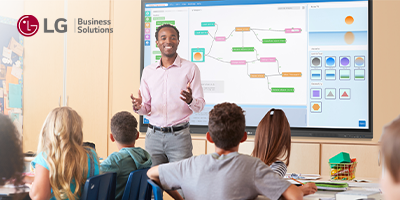
Revolutionize Your Classroom
Traditional teaching methods are no longer enough. LG CreateBoard™ offers advanced presentation and collaboration tools designed to boost student engagement and empower educators.Student Learning
Technology Enhances Student Learning
Digital-native students have access to the devices they need to stay connected, engaged, and excited about learning. Laptops and tablets help break down the digital divide while providing students with supportive and personalized learning that meets their needs. With expanded digital tools such as collaboration platforms, virtual reality, and gamified learning, students are taken beyond the four walls of the classroom to learn in the context that’s right for them. Trends for designing student-centered classrooms include digital displays, interactive whiteboards and projectors, and movable furniture that transforms static classrooms into spaces where learners are eager to spend time. Today’s emerging classroom technology enhances student learning in a variety of ways, sparking creativity, supporting growth, and helping students thrive throughout K–12 and beyond.
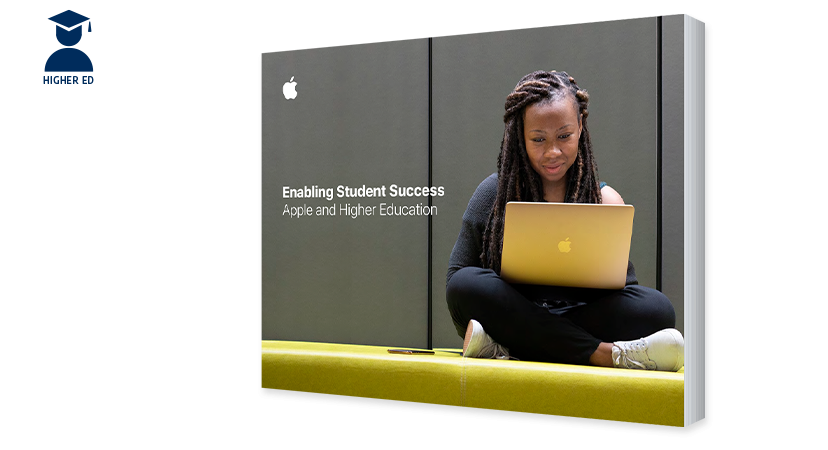
Enabling Student Success
Apple and Higher Education
Today’s higher education leaders recognize the importance of providing equitable access to the tools and resources that are critical to enabling this success for every student. This has become even more important—yet even more challenging—with the rise of hybrid and online learning environments.
Against this backdrop, many higher education leaders are developing strategic initiatives centered on providing Apple products to all students and faculty to ensure equitable access to cutting-edge tools that support a holistic approach to student success. This document is intended for higher education leaders who are interested in exploring how Apple products can help them create amazing experiences focused on student success in a hybrid learning environment.
How the Right Technology Can Motivate Students
An Essential Student Learning Resource
One of the biggest questions educators, administrators, and parents face is: How do we really get students invested in learning? What will it take to ignite their passion, help them explore their unique abilities and skills, and create the foundation for a lifelong habit of learning? In this essential resource, take a deep dive into the latest technologies and how they’re helping today’s students stay focused on learning.
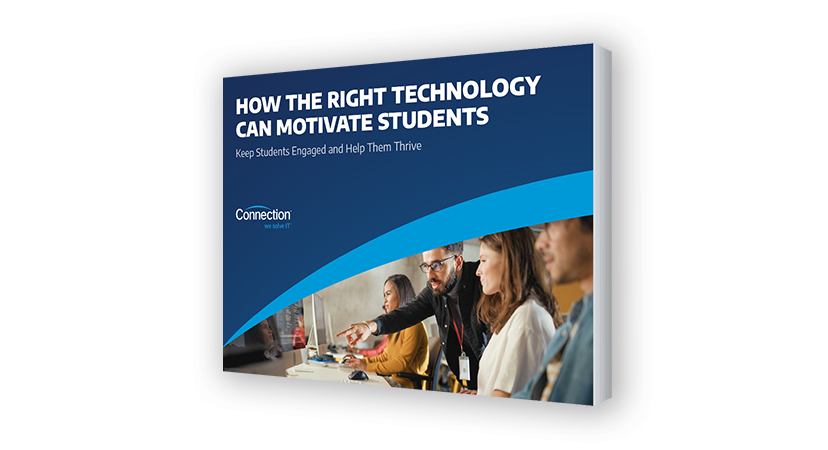
Educators’ Tools
Technology Empowers Educators
Educators are being asked to adapt to a wide range of learning environments. Whether teaching online, in hybrid settings, or in the classroom, technology empowers educators to support the needs of students. From professional development opportunities to technologies that can automate assessment scoring, today’s new solutions free up time and expand educators’ knowledge. With the right technology and support, teachers can spend less time on administrative work and more time where it counts the most—engaging with and inspiring students for classroom success.

Professional Development for Educators
Bringing teachers and students together through modern and effective technology
As remote teaching and learning continue to become the mainstays of the modern education landscape, technology is evolving quickly to meet the demands of a socially distanced world. As a result, there has never been a greater need to support teachers with improving their own skills—and ultimately student outcomes.
Connection’s professional development services assist teachers with integrating appropriate and meaningful instructional technology tools for effective teaching and learning.
Microsoft in Education
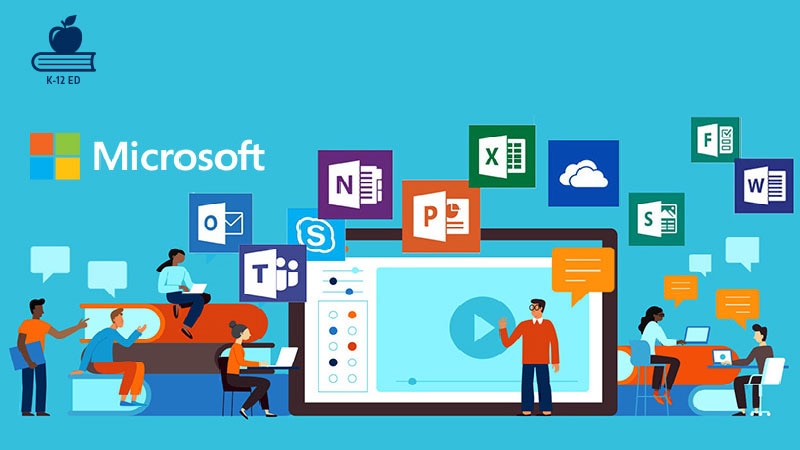
A Full-Circle Connection Customer Success Story with Microsoft in Education
When the pandemic hit in March of 2020, educators were faced with huge challenges while transitioning to virtual learning. At the time, Cindy Daniels—a former Principal turned Professional Learning Consultant and certified MIE at Connection—had been working with and training K–12 teachers. She quickly transitioned her own approach, and began virtually training educators on how they could use Microsoft 365 to better reach students and organize their classes and content.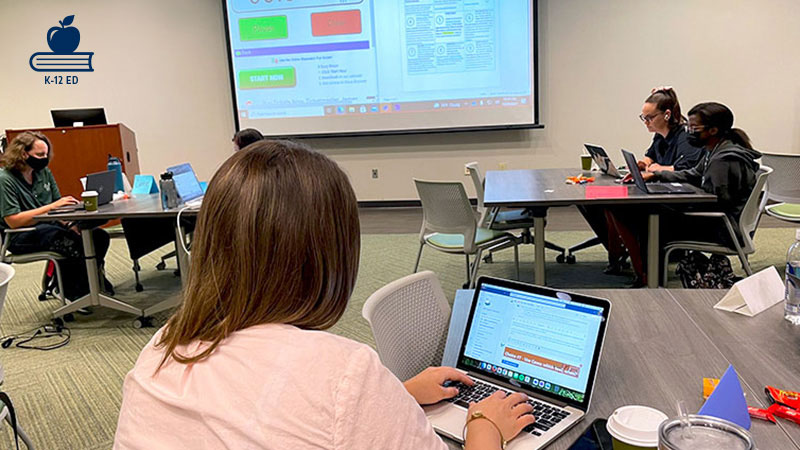
A Connection Customer Success Story with Microsoft in Education
Rachel Hatten, Director of Professional Development at the David C. Anchin Center for the Advancement of Teaching, is a big believer in the “tinkering mentality” when exploring tech tools, particularly when it comes to teaching.“The more we can get our pre-service teachers engaged in that mentality, the more willing they are to let students take risks and try things out. It is okay to use a tool you are not fully versed in and let the kids teach you! They will explore. They will become the experts.”
Classroom Technology Resources
Technology Is Transforming the Classroom
Emerging technologies are transforming today’s classrooms and reshaping how students learn, interact, and prepare for future careers and other academic challenges. Take a closer look at the latest research and how technology is shaping innovative classrooms.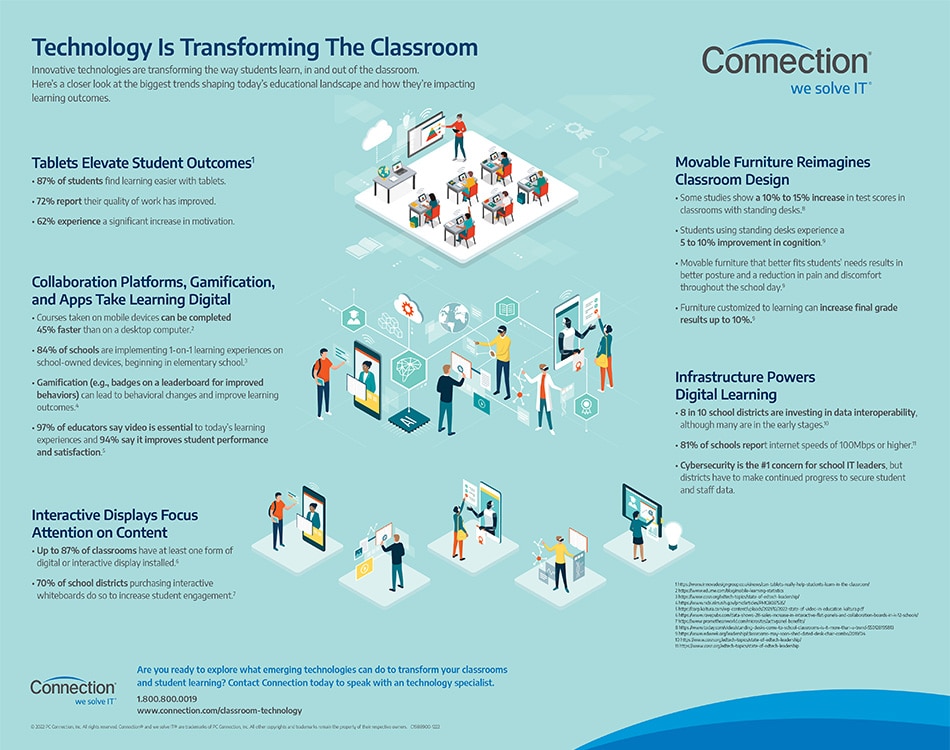
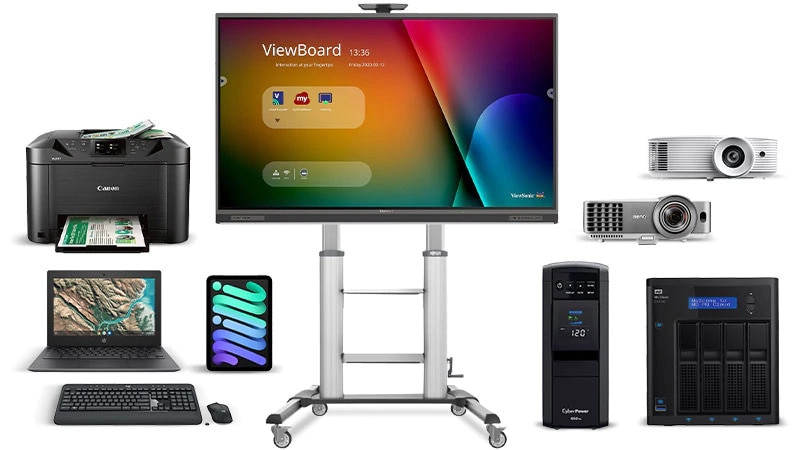
Education Tech
Stimulate Learning with the Right Technology
Education tech—computers and tablets, interactive displays and projectors, network infrastructure, software solutions, and more—are essential for today’s educational institutions. The right technology can:
- Cut costs
- Help administrators
- Promote achievement
- Stimulate learning
- And more!
Classroom Technology Products
Was $2,399.00
Now
$1,798.95
Was $5,299.00
Now
$2,979.95
Was $7,999.00
Now
$4,059.95
Was $1,099.99
Now
$1,004.78
Batch Add Products by Item #
16



